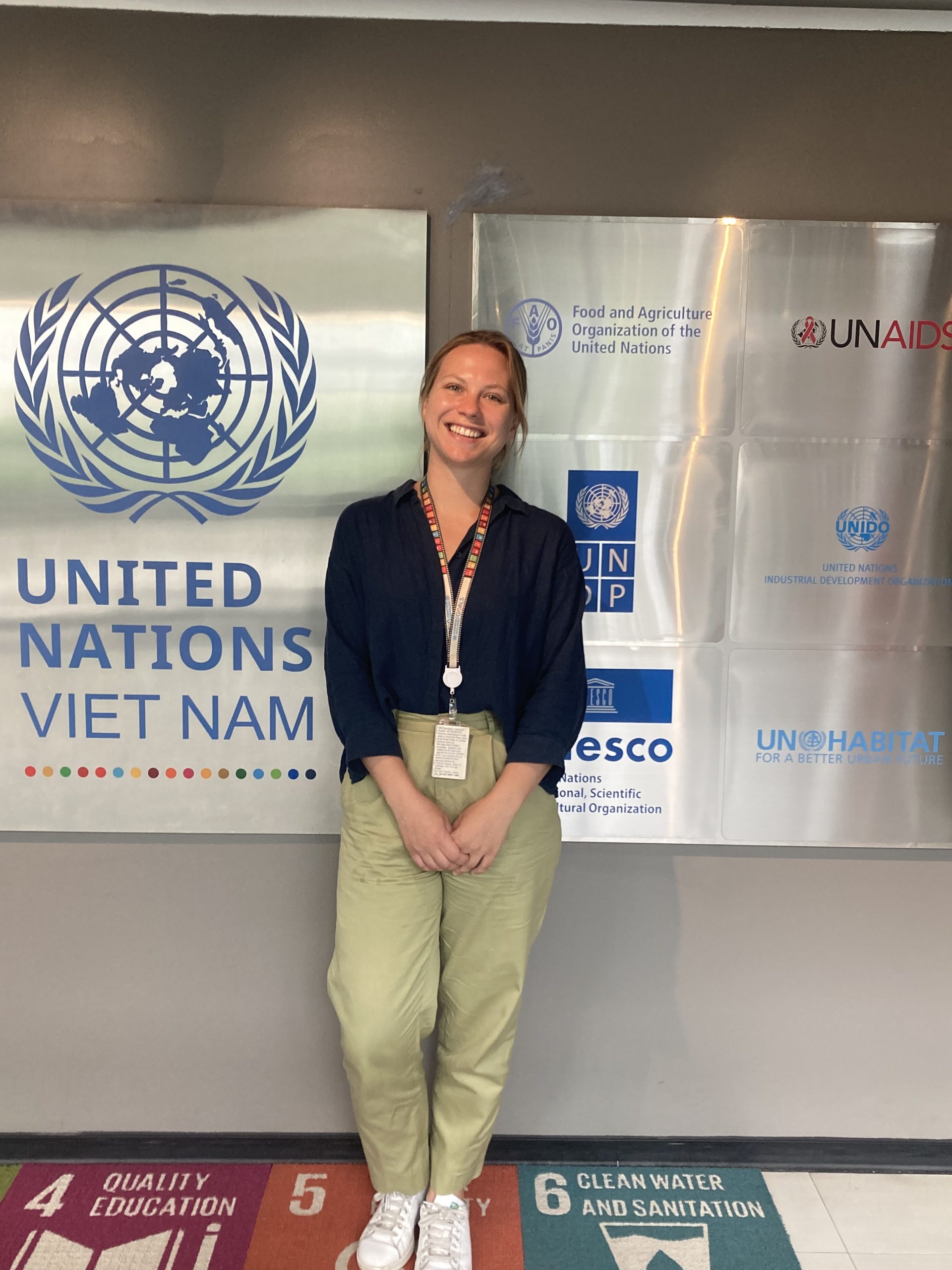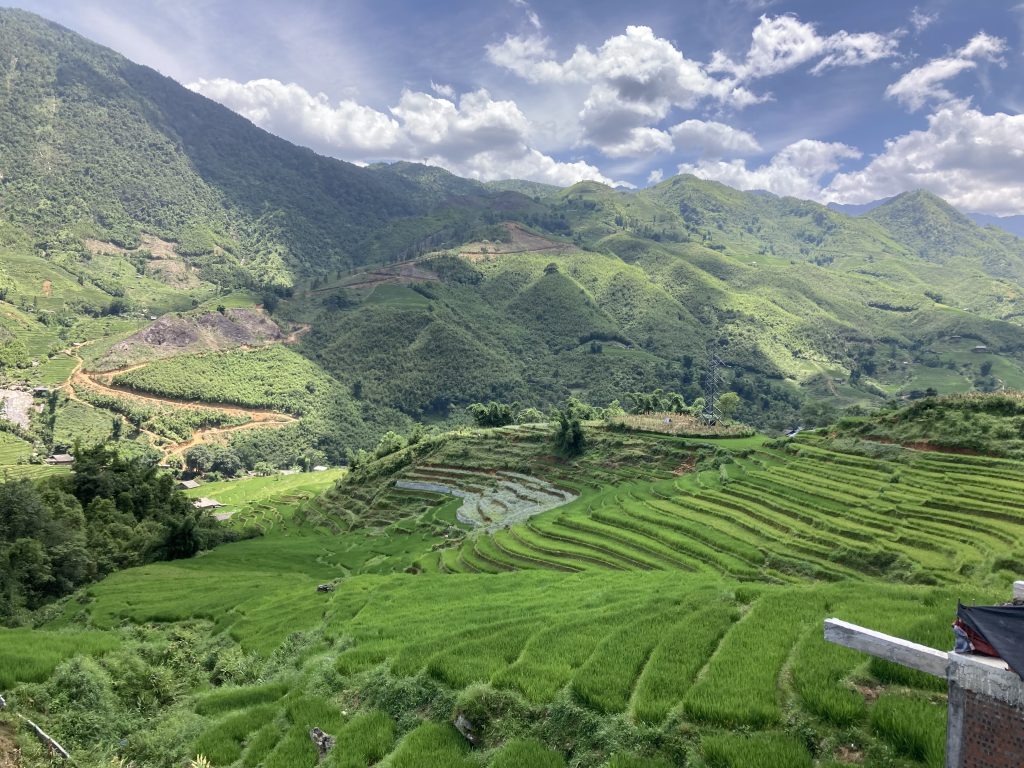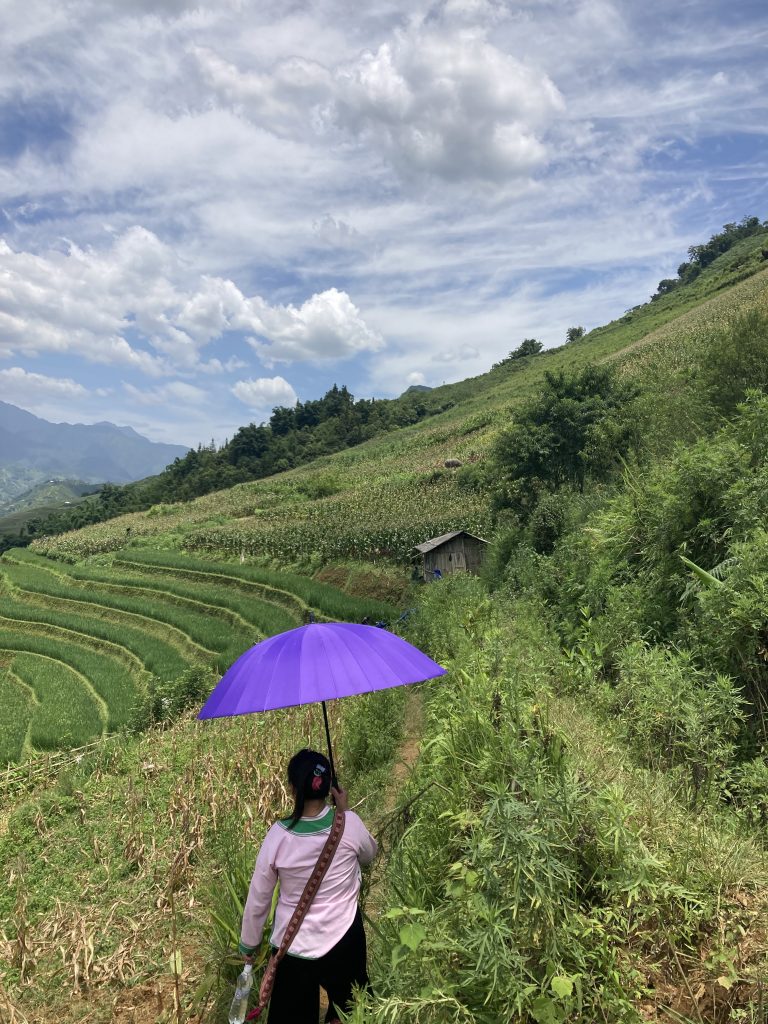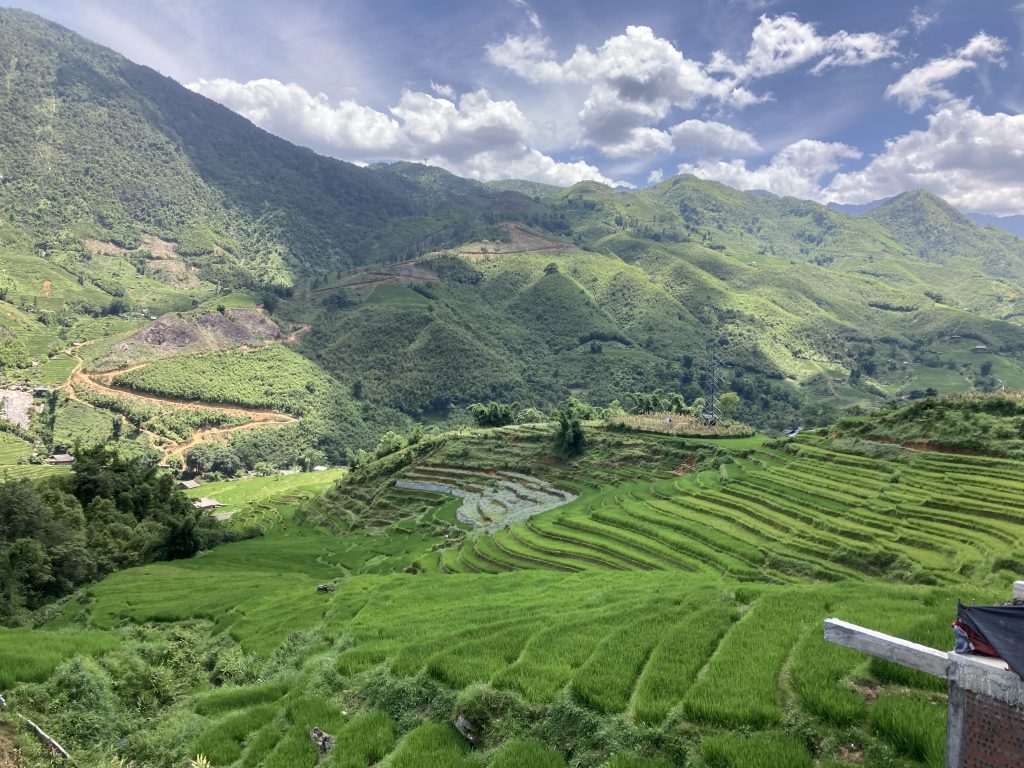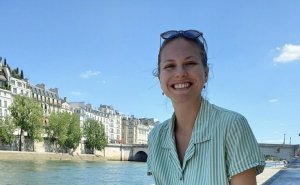SDG–Sustainable Development Goals, were put forth by the United Nations (UN) in 2015 as part of a global development framework that interlinks environmental, social and economic wellbeing.
Having learned more about the SDGs in Applied Conservation Science and Policy in the Spring 2023 term, it is exciting seeing them in action and how they are used to focus the work of the UN.
Visually, reminders of the SDGs are everywhere–big blocks in the cafe, pencil holders, and coffee mugs serve as desk reminders of the SDGs. More than just visuals however, reports and presentations refer to what SDG they are supporting and which ones they are striving to include.
The SDGs that I am working on primarily are SDG 13: Climate Action and 14: Life Underwater. In the first blog, I wrote briefly about the work I’m doing on NbS (Nature-based solutions 😉 ) in Kien Giang biosphere reserve, which is a part of the Mekong Delta. These NbS serve to conserve and preserve coastlines, increasing the biodiversity in and along the waters while improving the livelihood of the communities.
While these are my primary focus, I have also been able to sit in, learn about JET. JET refers to the Just Energy Transition, making sure the shift to renewable energy includes socio-economic and equitable policy. I have also been tasked with incorporating NbS as part of the Climate-Health Nexus for Viet Nam which works on creating a resilient health system in Viet Nam while improving health outcomes, a critical project as Viet Nam is ranked one of the countries to be most affected by climate change.
In the coming weeks my team will be doing a site visit, to better determine how NbS can be applied and the interests and needs of the community. I won’t be able to attend these site visits since I will be heading back to Monterey to start another semester at MIIS. I am incredibly grateful for this opportunity to work on NbS for coastal resilience in Viet Nam. I will continue to be in contact with my team at the UNDP and help them finalize the GEF8 proposal.




